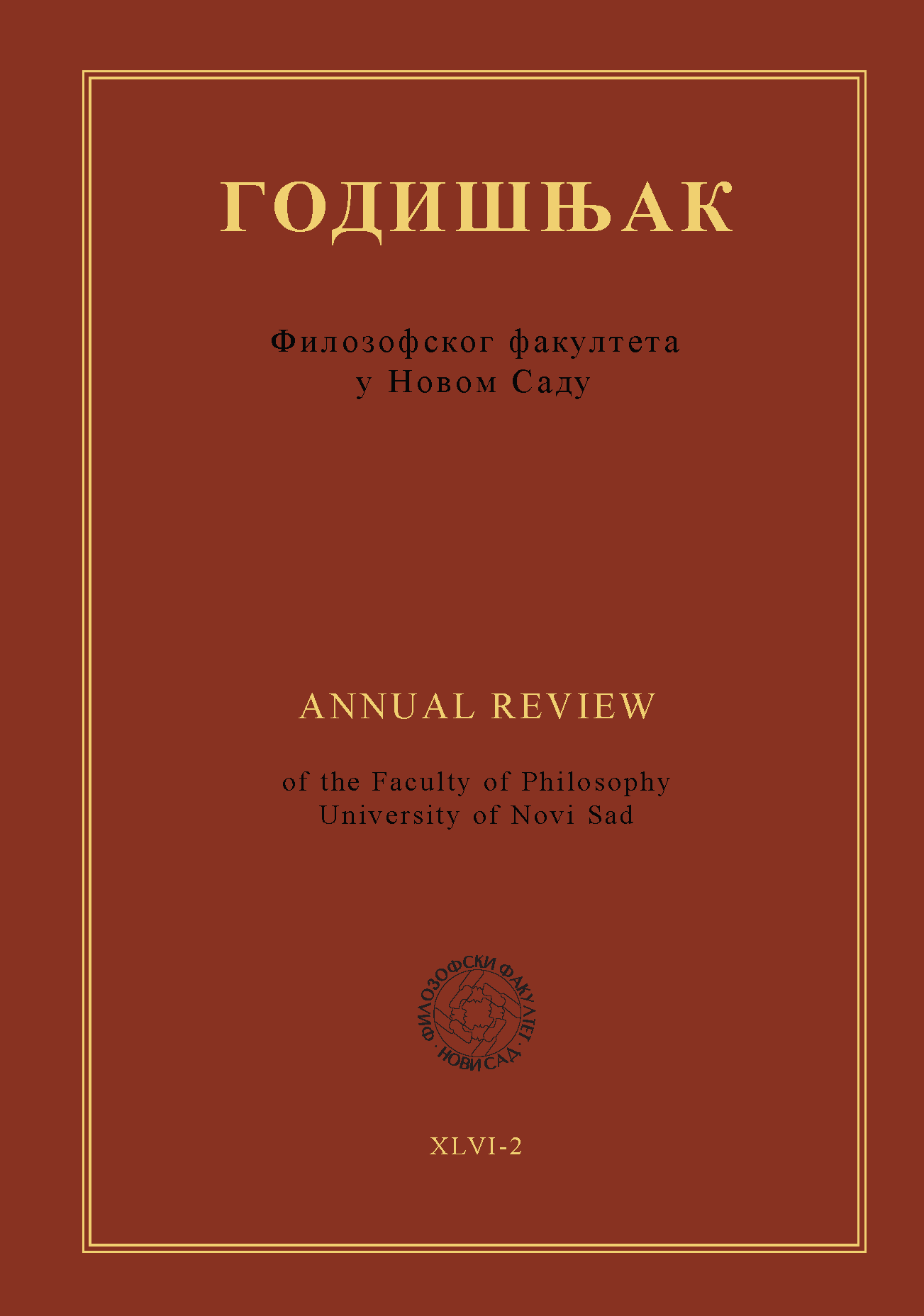RODNE GEOGRAFIJE MOĆI LONDON IN VIRGINIA WOOLF’S MRS DALLOWAY AND JEAN RHYS’S VOYAGE IN THE DARK
Главни садржај чланка
Сажетак
Ovaj rad predstavlja paralelnu analizu romana Gospođa Dalovej Virdžinije Vulf i Putovanje u mraku Džin Ris, čije se radnje dešavaju u Londonu u godinama oko Prvog svetskog rata. Budući da se oba romana dešavaju u gradskoj sredini i da su u glavnoj ulozi žene, ova dva dela se dopunjuju u pogledu reprezentacije. U središtu interesovanja su glavne junakinje koje pripadaju različitim društvenim staležima.
Kako bi se stvorila što jasnija slika društvenih staleža Londona tog vremena, esej kombinuje rodnu i geografsku prizmu. Cilj eseja jeste da istraži dva aspekta: prvo, položaj protagonistkinja u rodnom, a zatim i u društvenom kontekstu. Glavni argument ovog eseja jeste da je London u ova dva romana izvor dvostruke marginalizacije – grad nepravedan prema kolonijalnim subjektima, a takođe nepravedan prema ženama iz svih društvenih staleža. Kao teorijsku osnovu, rad koristi koncept rodne geografije moći kako bi otkrio kompleksne načine na koje različite strukture moći utiču na gradski pejzaž, kako na makro, tako i na mikro nivou.
Metodološki gledano, ovaj rad oslanja se u potpunosti na interpretaciju, služeći se pritom bliskim čitanjem. Rezultati istraživanja navode na sledeće zaključke: dok je Ana, glavna junakinja Putovanja u mraku, mlada žena koja je u London došla iz daleke kolonije, te je tako „autsajder“ bez stalne adrese, Klarisa Dalovej, protagonistkinja romana Gospođa Dalovej, mada naizgled privilegovana, sputana je time što metropolu doživljava sasvim ograničeno. Takvi rezultati potvrđuju pretpostavku da je Londonu tog vremena surovo mesto ne samo za osobe koje su se doselile iz kolonija, već i žene svih društvenih staleža, pa čak i onih najviših, odavno odomaćenih u metropoli.
Downloads
Детаљи чланка
Референце
Benjamin, W. (1978). Paris, Capital of Nineteenth Century. In: P. Demetz (ed.) (1978), E. F. N. Jephcott (trans.). Reflections: Essays, Aphorisms, Autobiographical Writings. New York, NY: Harcourt Brace Jovanovich. 146–162.
Bowlby, R. (1992). Still Crazy after All These Years: Women, Writing, and Psychoanalysis. London and New York: Routledge.
Brassard, G. (2007). Fast and Loose in Interwar London: Mobility and Sexuality in Elizabeth Bowen's To the North. Women: A Cultural Review 18, 3, 282–302. [Taylor and Francis Online]. doi:10.1080/09574040701612429.
Brooker, P, & A. Thacker. (2005). Introduction: Locating the Modern. In: P. Brooker & A. Thacker (ed.) (2005). Geographies of Modernism: Literatures, Cultures, Spaces. London and New York: Routledge. 1–5.
Daiches, D. (1979). ‘Virginia Woolf's London’. In: D. Daiches & J. Flower (ed.) (1979). Literary Landscapes of the British Isles: A Narrative Atlas. New York, NY: Paddington. 69–89.
Dell'Amico, C. (2005). Colonialism and the Modernist Moment in the Early Novels of Jean Rhys. London & New York: Routledge.
Grant, A.J. (2001). Class, Definition of. In: R. J. Barry Jones (ed.) (2001). Routledge Encyclopedia of International Political Economy: Entries A-F. London & New York: Routledge. 161.
Mahler, S.J. & P.R. Pessar. (2001). Gendered Geographies of Power: Analyzing Gender Across Transnational Spaces. Identities, 7(4), 441–459. doi: 10.1080/1070289X.2001.9962675
Maurel, S. (1998). Jean Rhys. Basingstoke: Macmillan.
‘Mrs. Dalloway’s London’. (2020) Google Maps. Accessed 22 Nov. 2020, from: www.google.com/maps/d/viewer?mid=1mRbzQIldTLYIoty-9AEnjh6JTog&hl=en_US&ll=51.5127768755441%2C-0.14119499999992513&z=14.
Nord, D.E. (1995). Walking the Victorian Streets: Women, Representation, and the City. Ithaca: Cornell University Press.
Parsons, D.L. (2000). Streetwalking the Metropolis: Women, the City, and Modernity. Oxford: Oxford University Press.
Plante, D. (1979). Jean Rhys: A Remembrance. Paris Review 76, 238–284.
Rhys, J. (2000). Voyage in the Dark. London: Penguin.
Rosner, V. (2005). Modernism and the Architecture of Private Life. New York, NY: Columbia University Press.
Ruotolo, L. (1977). Mrs. Dalloway: The journey out of subjectivity. Women's Studies: An inter-disciplinary journal, 4 (2–3), 173-78. [Taylor and Francis Online]. doi:10.1080/00497878.1977.9978414.
Savory, E. (1998). Jean Rhys. Cambridge: Cambridge University Press.
Scott, L. (2014). Petrified Mermaids: transcendence and female subjectivity in the aesthetics of Virginia Woolf's Mrs Dalloway and André Breton's Nadja. Textual Practice 28 (1), 121–140. [Taylor and Francis Online]. doi:10.1080/0950236X.2013.835749.
Snaith, A. (2005). A Savage from the Cannibal Islands: Jean Rhys and London. In: P. Brooker & A. Thacker (ed.) (2005). Geographies of Modernism: Literatures, Cultures, Spaces. London & New York: Routledge. 76–85.
Tambling, J. (1993). Repression in Mrs Dalloway's London. In: S. Reid (ed.) (1993). Mrs Dalloway and To the Lighthouse: Virginia Woolf. London: Macmillan. 57–70.
Thacker, A. (2003). Moving through Modernity: Space and Geography in Modernism. Manchester: Manchester University Press.
Thomas, S. (1999). The Worlding of Jean Rhys. Santa Barbara, CA: Greenwood.
Woolf, V. (1996). Mrs Dalloway. Ware: Wordsworth Editions.





